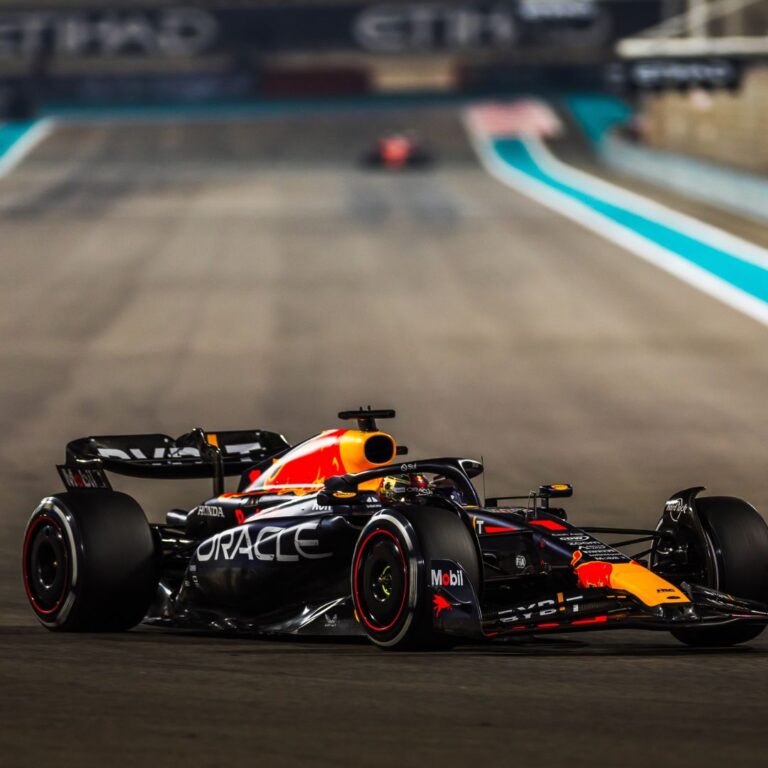Red Bull Racing, a leading team in Formula 1, has achieved remarkable success since its establishment in 2005. Known for its innovative approach and aggressive ambition, the team has consistently pushed the limits in motorsport. This article traces Red Bull Racing’s journey, from its early years to its dominance on the Formula 1 stage.
The Origins: Red Bull’s Entry into Formula 1
Red Bull Racing’s story begins with its founder, Dietrich Mateschitz, who used Formula 1 as a key marketing platform. Red Bull initially entered the sport by sponsoring other teams, such as Sauber, in the 1990s.
However, Mateschitz wanted more than just sponsorship—he aimed to own a team. In 2004, Red Bull purchased Jaguar Racing, rebranding it as Red Bull Racing in 2005. Christian Horner, a young and ambitious former team manager, was appointed as team principal. Red Bull Racing entered Formula 1 with a fresh approach, aiming to disrupt the traditional order.
Building Foundations: 2005–2008
In the team’s first season, Red Bull Racing finished sixth in the Constructors’ Championship, showing early promise. They combined a youthful image with technical innovation, setting the stage for future success.
The team’s fortunes changed dramatically with the hiring of Adrian Newey, a legendary Formula 1 car designer, in 2006. Newey’s expertise in aerodynamics and engineering would become crucial in the years ahead.
Red Bull also invested in nurturing young talent through its Red Bull Junior Team. This program developed future stars, including Sebastian Vettel, who would become key to the team’s rise.
Rise to Power: 2009–2010
By 2009, Red Bull had transformed into a serious contender, thanks to Newey’s revolutionary car design, the RB5. The team secured its first victory at the Chinese Grand Prix, with Sebastian Vettel leading the charge.
The 2010 season marked a breakthrough. Red Bull won both the Constructors’ Championship and Sebastian Vettel clinched his first World Championship, becoming the youngest champion in Formula 1 history.
The Vettel Era: 2011–2013
From 2011 to 2013, Red Bull Racing dominated Formula 1, winning four consecutive Constructors’ and Drivers’ Championships. The team’s success was built on Adrian Newey’s cutting-edge designs and Vettel’s exceptional driving.
In 2011, Vettel won 11 out of 19 races, cruising to his second World Championship. The team continued its dominance in 2012, overcoming a tight battle to win both titles again.
The 2013 season saw Red Bull and Vettel at their peak, with the team securing 13 race wins, including nine consecutive victories for Vettel. Red Bull Racing had cemented itself as a Formula 1 powerhouse.
The Hybrid Era Struggles: 2014–2018
The 2014 introduction of hybrid power units shifted the competitive landscape, with Mercedes becoming the dominant team. Red Bull’s engine supplier, Renault, struggled to adapt, leaving Red Bull out of title contention.
Despite these challenges, Red Bull remained competitive, with Daniel Ricciardo stepping up as a race winner. In 2016, Red Bull discovered its next star, Max Verstappen, who became the youngest Grand Prix winner at just 18 years old.
The Verstappen Era: 2019–Present
Red Bull switched to Honda engines in 2019, improving their performance. By 2020, Max Verstappen was the team’s clear leader.
In 2021, Verstappen and Lewis Hamilton of Mercedes engaged in one of the most intense title battles in Formula 1 history. Verstappen claimed his first World Championship in dramatic fashion at the final race in Abu Dhabi, ending Mercedes’ dominance.
Red Bull built on this success in 2022, with Verstappen winning his second consecutive title and the team securing the Constructors’ Championship.
Red Bull Racing’s journey, from an upstart team in 2005 to a Formula 1 powerhouse, is a testament to bold ambition, technical innovation, and exceptional talent. With key figures like Adrian Newey, Christian Horner, and stars like Sebastian Vettel and Max Verstappen, Red Bull has shaped modern Formula 1 and continues to push boundaries.

